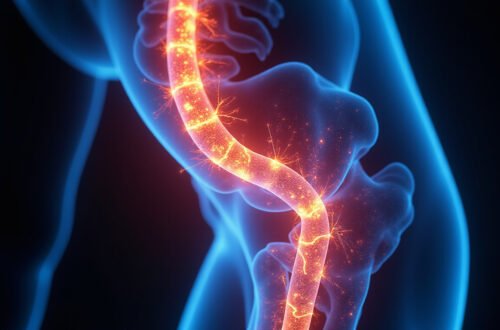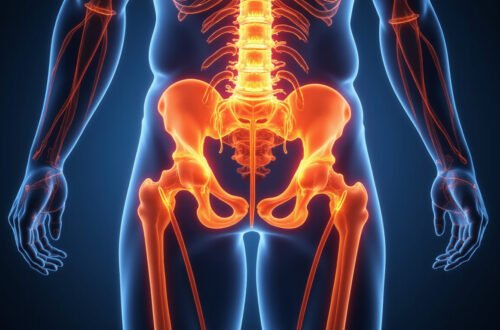Experiencing sharp, shooting pain down your lower back or legs? You might be dealing with sciatica, a common condition that affects millions worldwide. Early and accurate sciatica diagnosis methods are crucial for effective treatment and pain relief. This article explores the most reliable diagnostic techniques doctors use to identify sciatica quickly, enabling timely and targeted interventions.
Understanding Sciatica and Its Importance of Early Diagnosis
Sciatica refers to pain that radiates along the path of the sciatic nerve, which extends from the lower back through the hips, buttocks, and down each leg. It is typically caused by compression or irritation of the nerve, often due to herniated discs, spinal stenosis, or degenerative spine conditions. Early diagnosis not only helps rule out other serious conditions but also allows doctors to tailor treatment plans that can reduce pain, improve mobility, and prevent complications.
Common Sciatica Diagnosis Methods
Healthcare professionals use a combination of clinical evaluations, imaging tests, and patient history to diagnose sciatica accurately. Here’s an overview of the most widely used sciatica diagnosis methods:
1. Clinical History and Symptom Assessment
The first step involves a detailed collection of your medical history and a thorough review of symptoms. Doctors ask about:
- Nature, intensity, and duration of pain
- Locations where pain radiates
- Activities or positions that worsen or relieve symptoms
- Previous back injuries or spine-related health issues
This initial step helps narrow down potential causes and assess whether symptoms align with sciatic nerve involvement.
2. Physical Examination
During the physical exam, your doctor will perform several tests to assess nerve function and pinpoint the source of pain. These tests include:
- Straight Leg Raise (SLR) Test: The doctor lifts your leg while lying down. Pain triggered between 30 to 70 degrees of leg elevation often indicates sciatica.
- Reflex and Sensory Tests: Evaluating reflexes, muscle strength, and skin sensation helps identify nerve compression levels.
- Posture and Gait Analysis: Observing how you stand and walk can reveal compensatory behaviors and mobility restrictions caused by sciatic pain.
3. Imaging Techniques
When clinical evaluations suggest sciatica, imaging helps confirm diagnosis and identify underlying structural issues.
Magnetic Resonance Imaging (MRI)
MRI is considered the gold standard in sciatica diagnosis methods because it provides highly detailed images of soft tissues including discs, nerves, and spinal cord. It detects herniated discs, tumors, or spinal stenosis that might compress the sciatic nerve. MRI is non-invasive and does not use radiation.

Computed Tomography (CT) Scan
When MRI isn’t available or suitable, CT scans offer cross-sectional images of bones and soft tissues. They are particularly useful to visualize bone structures like vertebral fractures or degenerative changes contributing to sciatica.
X-Rays
Though less detailed, X-rays can identify spinal alignment problems, arthritis, or fractures. X-rays are often the first imaging test to rule out other causes of back pain.
4. Electromyography (EMG)
EMG measures electrical activity in muscles and nerves to evaluate nerve damage. It helps differentiate sciatica from other nerve disorders like peripheral neuropathy. EMG can pinpoint the exact nerve root affected by compression.
5. Nerve Conduction Studies
Often performed alongside EMG, these tests measure the speed and strength of electrical signals traveling along the sciatic nerve and its branches. Reduced conduction velocity indicates nerve injury or irritation.
Why Accurate Sciatica Diagnosis Matters
Proper use of sciatica diagnosis methods enables personalized treatment that can dramatically improve outcomes. Misdiagnosis or delayed diagnosis can lead to worsening pain, mobility loss, and even permanent nerve damage.
Effective Treatment Options After Diagnosis
Once diagnosed, doctors develop a comprehensive treatment plan based on the cause and severity of sciatica pain.
Conservative Treatments
Most patients respond well to non-surgical approaches, such as:
- Physical Therapy: Guided exercises improve flexibility, strengthen back muscles, and reduce nerve irritation.
- Medications: NSAIDs, muscle relaxants, or oral steroids alleviate inflammation and pain.
- Heat and Cold Therapy: Applying ice or heat packs can minimize symptoms.
- Lifestyle Adjustments: Weight management, good posture, and avoiding prolonged sitting help reduce recurrence.
Injections
If pain persists, epidural steroid injections deliver anti-inflammatory medication directly near the irritated nerve, offering targeted relief.
Surgical Interventions
Surgery is considered when conservative treatments fail or if there is significant nerve damage or loss of function. Procedures may include discectomy to remove herniated discs or spinal decompression to relieve nerve pressure.
Summary: Key Sciatica Diagnosis Methods
- Clinical history and symptom review
- Physical examination (SLR test, reflexes, sensory checks)
- Imaging (MRI, CT, X-rays)
- Electromyography (EMG) and nerve conduction studies
These methods, combined, help doctors diagnose sciatica efficiently and accurately, enabling effective treatment strategies.
Frequently Asked Questions About Sciatica Diagnosis Methods
Q1: What is the most accurate sciatica diagnosis method?
The most accurate method involves a combination of a detailed physical examination and MRI. MRI provides clear images of nerve compression, making it the gold standard for diagnosing sciatica.
Q2: How do doctors distinguish sciatica from other types of back pain?
Doctors differentiate sciatica by assessing specific symptoms such as shooting leg pain that follows the sciatic nerve path, positive Straight Leg Raise test, and nerve function tests like EMG that confirm nerve root involvement.
Q3: How quickly can sciatica be diagnosed after symptoms start?
Diagnosis can often be made within a few days to weeks of symptom onset, especially when clinical signs are clear. Early diagnosis allows rapid deployment of targeted therapies to reduce pain.
Trusted Source on Sciatica Diagnosis
The Mayo Clinic provides a comprehensive guide to diagnosing and treating sciatica, demonstrating the importance of a multifaceted diagnostic approach for best outcomes (source).
If you’re experiencing symptoms consistent with sciatica, don’t hesitate to seek a thorough evaluation. Early diagnosis using proven sciatica diagnosis methods can significantly speed up pain relief and help you regain your quality of life. Contact your healthcare provider today to start the right treatment and reclaim your mobility.






